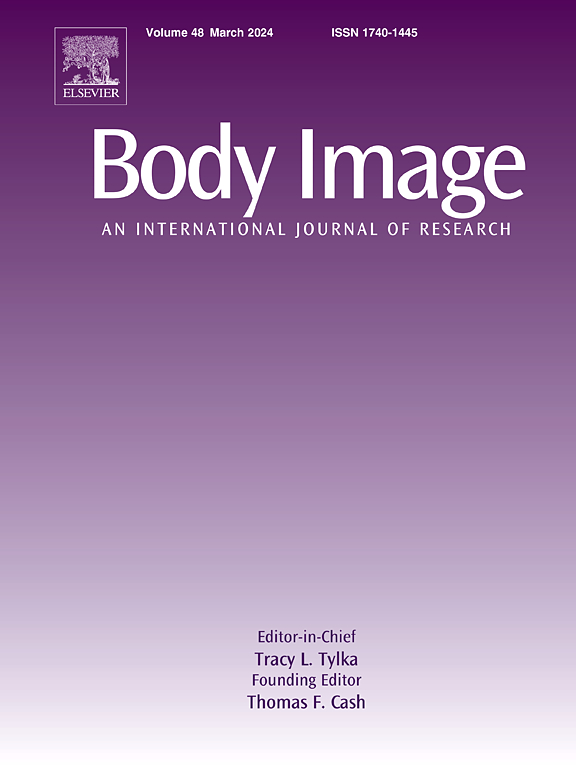Perceptual body image tasks require ethnically appropriate stimuli
IF 5.4
1区 心理学
Q1 PSYCHIATRY
引用次数: 0
Abstract
Current body ideals and perceived weight status are often assessed with tests that include images which depict BMI dependent morphological changes in body shape. These images are almost exclusively based on White European (WE) bodies. However, East Asian (EA) and South Asian (SA) people have a different body composition and pattern of adipose deposition for a given BMI. As such, matching someone’s body from an EA or SA background to a WE body may lead to errors in estimation, as there are no equivalent bodies to match against. Therefore, we 3D scanned EA, SA and WE female volunteers and constructed computer-generated imagery (CGI) bodies based on a statistical analysis of the size and shape variation specific to each ethnic identity. We then asked participants to make judgements between pairs of bodies of the same or different ethnic identity as themselves. When presented with ethnically different stimuli, EA and SA participants significantly over-estimate body size and WE participants significantly under-estimate. Additionally, ethnically mismatched stimuli lead to significantly greater uncertainty about body size judgements. For the first time, we show that ethnically appropriate stimuli need to be used to assess body judgements and should be developed as a matter of urgency.
感知身体形象任务需要种族上合适的刺激
目前的身体理想和感知体重状况通常是通过测试来评估的,这些测试包括描绘身体形状中依赖BMI的形态学变化的图像。这些图像几乎完全是基于白人欧洲人(WE)的身体。然而,东亚人(EA)和南亚人(SA)对于给定的BMI有不同的身体组成和脂肪沉积模式。因此,将EA或SA背景的某人的身体与WE身体相匹配可能会导致估计错误,因为没有等效的身体可以匹配。因此,我们对EA, SA和we女性志愿者进行了3D扫描,并在统计分析每个种族身份的大小和形状变化的基础上构建了计算机生成图像(CGI)身体。然后,我们要求参与者对与自己种族认同相同或不同的两对身体做出判断。当呈现不同种族的刺激时,EA和SA参与者显著高估了身体尺寸,而WE参与者显著低估了身体尺寸。此外,种族不匹配的刺激会导致体型判断的不确定性显著增加。我们首次表明,需要使用符合种族的刺激来评估身体判断,并且应该作为紧急事项来开发。
本文章由计算机程序翻译,如有差异,请以英文原文为准。
求助全文
约1分钟内获得全文
求助全文
来源期刊

Body Image
Multiple-
CiteScore
8.70
自引率
28.80%
发文量
174
期刊介绍:
Body Image is an international, peer-reviewed journal that publishes high-quality, scientific articles on body image and human physical appearance. Body Image is a multi-faceted concept that refers to persons perceptions and attitudes about their own body, particularly but not exclusively its appearance. The journal invites contributions from a broad range of disciplines-psychological science, other social and behavioral sciences, and medical and health sciences. The journal publishes original research articles, brief research reports, theoretical and review papers, and science-based practitioner reports of interest. Dissertation abstracts are also published online, and the journal gives an annual award for the best doctoral dissertation in this field.
 求助内容:
求助内容: 应助结果提醒方式:
应助结果提醒方式:


